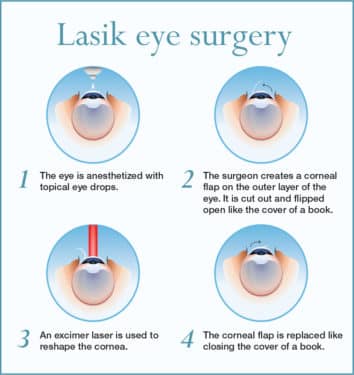The Ultimate Frequently Asked Question On Refractive Lens Exchange: Every Little Thing You Need To Know
The Ultimate Frequently Asked Question On Refractive Lens Exchange: Every Little Thing You Need To Know
Blog Article
Author-Blanton Eskesen
If you're taking into consideration refractive lens exchange, you possibly have a great deal of inquiries. This procedure might change how you see the world, providing advantages like lowered dependence on glasses. Nonetheless, it's essential to recognize the process, dangers, and who qualifies as a good candidate. Let's discover these important facets so you can make an informed decision about whether RLE is right for you.
What Is Refractive Lens Exchange and How Does It Function?
Refractive lens exchange (RLE) is a surgery designed to replace your eye's all-natural lens with a synthetic one, correcting vision issues like nearsightedness, farsightedness, or presbyopia.
Throughout the treatment, your specialist makes a small laceration in the eye, removes your natural lens, and inserts an intraocular lens (IOL) customized to your vision requires. This outpatient surgical procedure generally takes around 15 to half an hour per eye and is executed under neighborhood anesthetic.
You'll likely notice renovations in your vision practically quickly, though full healing might take a couple of weeks. RLE is particularly advantageous for those over 40 or with high prescriptions, offering a durable option contrasted to glasses or call lenses.
Your eye treatment specialist can assist determine if RLE is right for you.
What Are the Conveniences and Threats of Refractive Lens Exchange?
Selecting refractive lens exchange can bring about substantial improvements in your vision, yet it is necessary to weigh both the benefits and dangers prior to deciding.
On the bonus side, this treatment can improve your vision by dealing with concerns like presbyopia, nearsightedness, and hyperopia. Many people enjoy lowered dependancy on glasses or contact lenses, which can significantly boost their lifestyle.
However, it's crucial to think about prospective dangers. https://carol-alejandra.technetbloggers.de/uncover-essential-information-on-just-how-to-select-the-excellent-lasik-doctor-by-considering-5-considerable-concerns-recognize-what-is-required-prior-to-you-make-your-choice can include infection, glare, or halos around lights.
There's also an opportunity of overcorrection or undercorrection, which might call for extra treatments.
Who Is a Suitable Prospect for Refractive Lens Exchange?
If you're taking into consideration refractive lens exchange, it is necessary to understand whether you fit the account of an optimal prospect. Typically, you may be a great prospect if you're over 40, experience presbyopia, or have high levels of nearsightedness or farsightedness.
It's likewise critical that your vision is secure, suggesting your prescription hasn't altered considerably in the past year. If you have cataracts or other eye problems, you could gain from this procedure as well.
Nonetheless, specific elements, like unrestrained diabetes mellitus or autoimmune diseases, could disqualify you. To identify Mesa Lifetime LASIK Care , speak with an eye care expert that can assess your particular situation and recommend the best strategy customized to your demands.
Conclusion
Finally, refractive lens exchange can be a transformative choice for improving your vision, specifically if you're over 40 or have a high prescription. While the advantages are significant, it's critical to evaluate the threats and talk to your eye care specialist to identify if you're an excellent candidate. With the appropriate details and assistance, you can make an educated choice and possibly delight in a life with decreased reliance on glasses.
